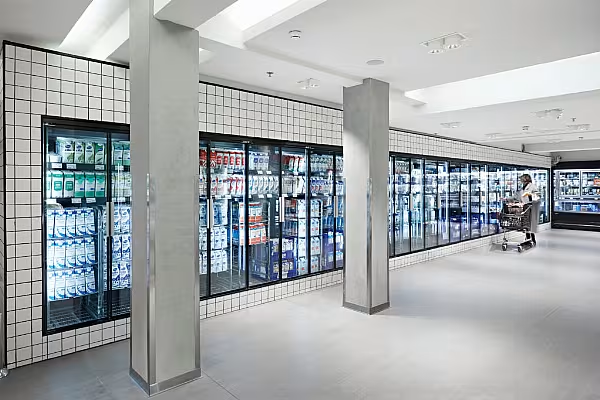Refrigeration and cold-chain infrastructure is essential to ensure that we can feed a growing global population. Toby Peters, Professor of Cold Economy at the University of Birmingham, explores this in more detail. This article first appeared in ESM Issue 6 2019.
How do we sustainably feed nearly ten billion people by 2050?
This was the pressing question recently posed by the World Resources Institute (WRI) and partners from the World Bank, the UNDP (United Nations Development Programme) and the UN Environment Programme as they launched the World Resources Report: Creating a Sustainable Food Future in July.
The report followed the outcome of the EAT-Lancet Commission report released earlier this year, led by an international group of leading academics, which considered how we can deliver healthy diets for such a large number of people from a sustainable food system.
According to the WRI, we will need to produce 56% more food in 2050 than we did in 2010, in order to feed an estimated ten billion people, but without efficient physical connectivity, production cannot and does not translate into supply.
Importance Of Refrigeration
A well-organised and sustainable food logistics network is absolutely critical to supply the production (with minimum product losses) and feed the ten billion. With that in mind, refrigeration and cold-chain infrastructure is essential to economically effective market reach through efficient connectivity.
According to the UNFAO (United Nations Food and Agriculture Organization), ‘the lack of sufficient and efficient cold-chain infrastructure is a major contributor to food losses and waste in NENA (Near-East, North Africa), estimated to equate to 55% of fruits and vegetables, 22% of meats, 30% of fish and seafood, and 20% of dairy.’
As one example, the UNFAO estimates that 35% of the fish caught is lost, noting that ‘most of the losses are due to a lack of knowledge or equipment, such as refrigeration or ice-makers, needed to keep fish fresh.’
Given that most food loss and waste in developing countries occurs during production and after it is harvested, the greatest potential for reduction is investment in infrastructure related to storage, transport, cold-chains and distribution.
Supply And Demand
The WRI and EAT-Lancet studies equally recognise the important role of refrigeration and market connectivity in matching increased supply to increased demand. As one example, both set targets for reducing food loss and food waste by 50%, and cold-chains are an essential enabling technology in helping to reach such an outcome.
The total food that is lost and wasted across the world today represents a combined 1.3 billion tonnes, or the production of nearly 30% of the world’s agricultural land. Hence, the WRI goes as far as to call for the target to be met by 2030.
However, neither piece of work – nor, indeed, the IFC or UNFAO – tries to quantify what would actually be required to successfully meet these targets.
Let alone transport, store and distribute nearly six billion tonnes of food by 2050 – a substantial portion of which will be fresh and temperature-sensitive produce – in terms of the physical numbers and capacity of temperature-controlled road vehicles, cargo ships, multi-modal containers, domestic refrigerators, chilled display cabinets, cold storages, pack houses, ripening chambers, pre-coolers, and a plethora of other cold-chain supporting equipment and infrastructure in the energy, transport, retail and food logistics sectors.
Furthermore, appropriate business operating models, cold-chain management systems and training, and skills development will be needed, too.
Improving The Network
As to an indication of the size of the challenge? Currently, 70% of food in mature, developed markets passes through a cold-chain at some point en route from the point of production to our table.
By comparison, in India, barely 10% of the produce that could benefit from using the cold-chain actually does so, and while it has one twentieth the population of India, the UK has ten times more refrigerated vehicles.
India is the world’s second-largest producer of vegetables and fruit, and among the top ten in fish and meat, but much of this is lost due to shortfalls in refrigeration and logistical support. Reportedly, upwards of 25% of such produce is lost due to a lack of farm gate preconditioning, including pre-cooling, refrigerated vehicles and shipping containers, and other supply chain bottlenecks.
Importantly, this infrastructure deficit restricts market expansion, which, in turn, dissuades efforts to improve productivity. Any efforts to produce more food without concurrent logistics enablement means higher supply at markets in immediate proximity to production points at the time of harvest, and a lower product valuation, as these markets are in surplus.
Environmental Obligations
Given the use of refrigerants and insulation in cold-chains, the sector is important, not only for its effect on our ability to deliver the Paris Agreement on Climate Change, but also for a successful outcome to the Montreal Protocol and Kigali Amendment.
In this regard, other than a commitment to achieving zero-carbon cold-chain logistics with no emission of pollutants, neither the WRI nor EAT-Lancet report considers the potential environmental impact if we do not achieve such a laudable aspiration, let alone the infrastructure investment required to make it happen, or the scale of the clean-energy resources needed to deliver on it.
Alongside providing enough nutritious food to feed nearly ten billion people and delivering it using clean energy, we must simultaneously improve the livelihoods of the nearly half a billion small and marginal farmers who are essential to today’s global food system and major stakeholders in its future.
According to the Africa Agriculture Status Report (AASR), 80% of Africa’s 51 million farms are smaller than two hectares. In combination, they produce 70% of the continent’s total food requirements.
The deployment of cold-chains does not just enhance food security, in terms of increasing reliable access to a sufficient quantity of nutritious food, it also allows farmers to earn more by ensuring the quality of their produce and providing the efficient and effective connectivity needed to sell it further afield, reaching consumption centres in distant cities and urban conurbations.
Such capacity is both empowering and galvanising, as the farmers can begin to consider growing higher-value produce for new markets.
It also provides opportunities to produce and sell food better suited to new growing conditions as they emerge, thereby helping them to build capacity for resilience and adapt to a changing climate.
Central Role
The central philosophical challenge to be addressed is that feeding the world is largely perceived today as a large-scale industrial enterprise, with land consolidation into larger, mechanised production units being the default business model for economic efficiency, but, for sustainability, we need new, radically innovative models that economically empower the marginal and small farmer and create rural employment and resilience, in alignment with the existing human backdrop and current on-the-ground reality.
Refrigeration and cold-chain logistics are at the heart of this, and India has recognised it as such, in that the deployment of integrated cold-chains is identified as a key pillar to fulfil Prime Minister Modi’s vision of “doubling farmers’ incomes” by 2022, but the reality of business dictates that no matter how appropriate a shift in philosophy might be, cold-chains will only be taken up by small and marginal farmers and associated supply chain players if they are affordable within the local economic context.
There are a range of price points within the various options, including shading or simple evaporation cooling, but the investments will likely increase in scope as operations increase in size and complexity.
Given the high capital requirement, marginal and small farmers across economies are likely to adopt pay-as-you-use-type services, and funding models will need to be innovative, driven through empowered farmer-producer organisations (FPOs), be they as farmer-producer companies (FPCs) or cooperatives.
Equally key is to enable small and marginal farmers through FPOs and other knowledge transfer channels to understand how to avail of services, including the integrated components of pre-cooling, storage and transport, to gain the economic advantages available from cross-geography access, distance-price arbitrage, time arbitrage, and cross-seasonal trading.
UN Sustainable Development Goals
Effective refrigeration can be an essential contributor to the United Nations’ Sustainable Development Goals – not least SDG 1 (End Poverty), SDG 2 (Zero Hunger), SDG 3 (Good Health and Well-Being), SDG 12 (Responsible Consumption and Production) and SDG 13 (Climate Action) – the Paris Agreement on Climate Change and the Kigali Amendment to the Montreal Protocol.
With a fast-growing global population, it is also key to ensure resilient food supply to both developed and developing markets.
© 2020 European Supermarket Magazine – your source for the latest retail news. Article by Stephen Wynne-Jones. Click subscribe to sign up to ESM: The European Supermarket Magazine














